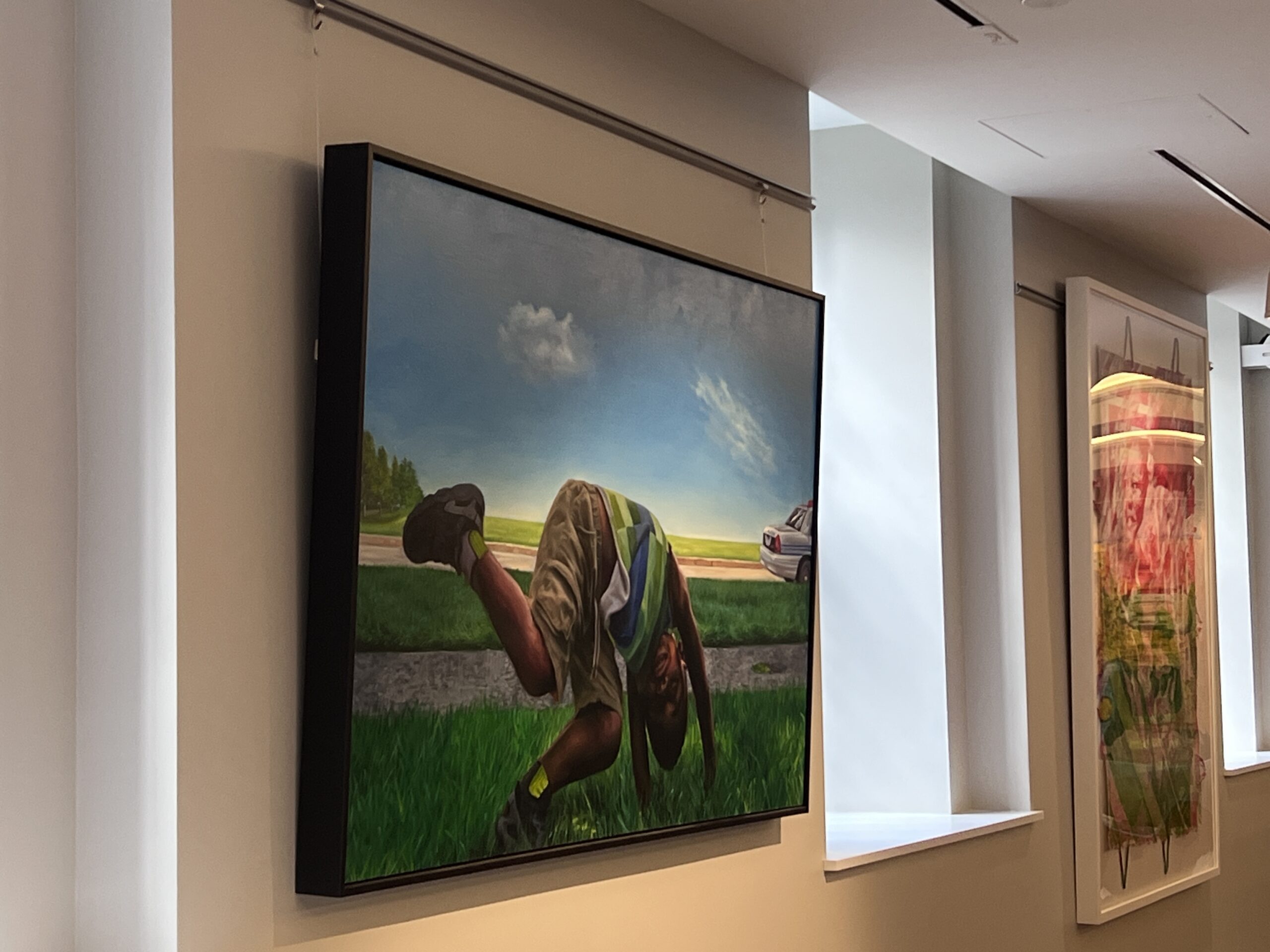These additions include the works of Yale-affiliated Black artists and a new portrait of Black theologian Alexander Crummell.
Kamini Purushothaman
11:51 pm, Feb 04, 2025
Staff Reporter

Kamini Purushothaman, Contributing Photographer
A curated exhibition from the collection of retired NFL player Kelvin Beachum and his wife, Jessica Beachum, and a newly unveiled portrait of theologian Alexander Crummell were recently added to the Yale Divinity School.
These two installations prompt viewers to consider how identity, power and remembrance are shaped in visual culture and what gaps exist in Yale’s institutional memory.
The Divinity School held the exhibition’s opening reception in Croll Entrance Hall on Friday night. The school collaborated with the Beachum family to choose twenty-one pieces that explore identity, power and Black identity. All the artists in the exhibition are Yale-affiliated, with most having completed their Master of Fine Arts at the university.
“It’s just beautiful to see exhibitions like this that speak to and highlight the wide array of arts that are available at the [Divinity] School,” said Clifford Chambliss DIV ’25, president of the Visual Arts Circle student group.
Calling the school a “premier art hub at Yale,” Chambliss emphasized its role in fostering conversations across artistic disciplines — from performing and visual arts to homiletics. He said the exhibition was a display of great skill that captures the Black experience.
According to Tom Krattenmaker, the Divinity School’s director of communications, the exhibition is part of a new art space. The works are on display at the Croll Family Entrance Hall, which was recently remodeled as part of the Living Village residential project.
“Exhibitions like this one invite viewers to reflect on religious, social and cultural issues, prompting conversations about identity, race and spirituality,” said Sophia Spralja DIV ’26, a Divinity School student concentrating on visual art and material culture. “These works drew my attention to distinct historical events in the Black experience that might otherwise have been overlooked.”
Spralja said that viewing the exhibition inspired questions about who is mourned, who is commemorated and who remains on the margins of visibility.
She added that the exhibition’s location in the main entryway of the Divinity School provides an important and visible opportunity to foster dialogue among peers.
As an avid soccer player herself, Spralja said she appreciated the intersection of sport and art that the Beachums are interested in.
In fact, Kelvin Beachum said that Collywobbles — a colorful mixed media piece named after the British slang term for nervousness — reminded him of his feelings each time he takes the field.
According to Chambliss, what truly makes the exhibition special is the Beachum family’s commitment to the artists whose works they collect.
“They’re not collecting just to amass artwork, but to actually build a relationship with each artist and contribute to an ongoing dialogue,” Chambliss said.
For featured artist Torkwase Dyson ART ’03, it is time “for a new relationship with abstraction.”
Her work draws inspiration from the architecture used by enslaved people who hid or stowed away to attain their freedom. Creating a shape system that represents various modes of movement and concealment, Dyson articulates how constraining infrastructure facilitated liberation.
Dyson described her approach as an “illegal abstraction developed out of the condition of new world-building toward liberation and revolution.”
In “The Night is Our Friend,” Dominic Chambers ART ’19 depicts two subjects resting on the other side of a wall, inviting viewers to follow their lead in a moment of shared respite. Through his use of color and contrasts, Chambers creates a dreamlike atmosphere.
Behind the wall his subjects are leaning against, nebulous spirits materialize — infusing the piece with elements of magical realism.
“My job is to offer my perspective as not all perspectives are told,” said Chambers of his artistic process.
As part of the school’s broader commitment to showcasing such untold perspectives, Krattenmaker revealed a new portrait of Alexander Crummell, a prominent 19th-century Black theologian who attended Yale.
Created by Jas Knight, a New York City-based artist native to Connecticut, the piece was unveiled on Monday, Feb. 3, at the onset of Black History Month. It will be showcased in the Divinity School’s common room, which features various portraits.
“Jas does not cut corners,” said Krattenmaker, describing the artist’s preference for using human models rather than photographs.
For the portrait of Crummel, Knight dressed his model in authentic 1850s vestments and garments provided by the wardrobe department at the School of Drama. The portrait is housed in a hand-carved frame created by Manuel Augusto Da Costa.
In the past, the Divinity School commissioned Knight to paint James Pennington, the first African American student to attend classes at Yale. Neither Crummell nor Pennington were recognized as official Yale students during their time at the University due to racial exclusion policies that barred Black students from formal enrollment. In 2023, the University awarded them posthumous honorary master’s degrees.
The portrait of Crummell will be a permanent fixture at the Divinity School. The Beachum family’s collection will remain on display through late March.
The Divinity School is open to all from 8:30 a.m. to 4:30 p.m. Monday through Friday.
